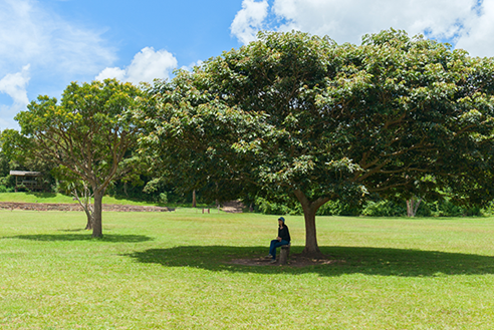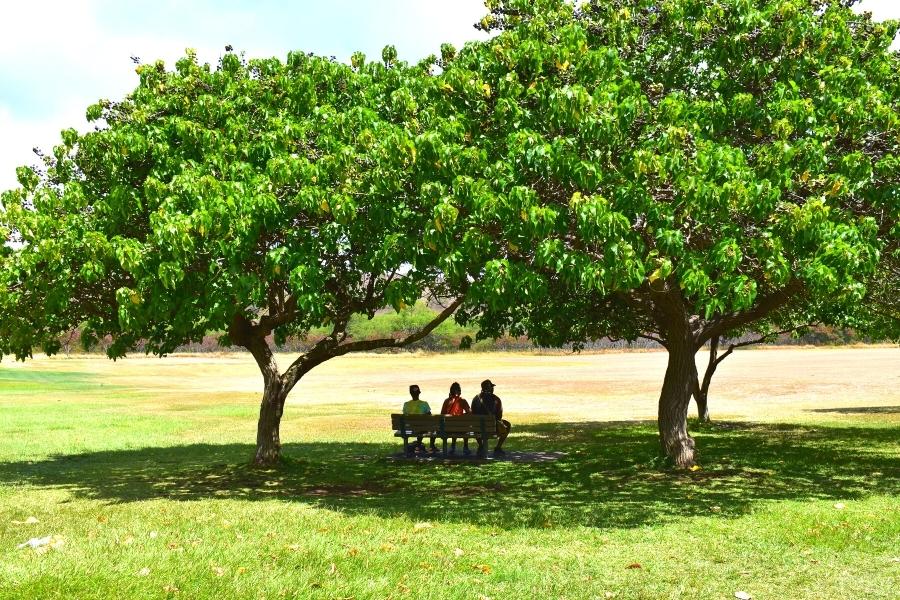When it comes to home maintenance, gutters often don’t get the attention they deserve—yet they play a crucial role in protecting your home from water damage. One factor that can contribute to gutter longevity is the presence of trees near your home, particularly those that provide shade. While tree shade can sometimes seem like a mixed blessing—especially with leaves and branches falling into gutters—it can actually have several positive effects on the lifespan and functionality of your gutters. In this article, we’ll explore the benefits of tree shade for gutter longevity and how to balance the positives and negatives of having trees around your home.
How Tree Shade Impacts Gutter Longevity
While trees are often associated with gutter problems due to falling leaves and debris, they can also provide numerous benefits that promote the overall health and longevity of your gutter system.
1. Protection from Harsh Weather Conditions
One of the primary benefits of tree shade for gutters is the protection it offers from the harsh effects of direct sunlight. Gutters that are constantly exposed to intense sun can suffer from several issues, including:
- Fading and Cracking: Direct sunlight can cause gutter materials (especially plastic or vinyl) to fade and weaken over time. The heat can cause the gutters to expand and contract, leading to cracks or warping.
- Premature Aging: Overexposure to UV rays can accelerate the deterioration of gutter materials. The high heat can cause metal gutters to oxidize, rust, or corrode faster than if they were shaded.
- Warping of Materials: On hotter days, direct sunlight can cause gutters to soften or warp, compromising their ability to carry water efficiently.
Trees that provide shade help prevent these issues by reducing the amount of direct sunlight hitting the gutters. This results in a longer lifespan for the gutters and less frequent need for repairs or replacements.

2. Cooling Effect on Gutters
In addition to protecting gutters from the sun, tree shade also helps to cool them down during hot weather. When gutters are cooler, the risk of damage from thermal expansion is reduced. Materials like aluminum, copper, or vinyl can expand and contract when exposed to extreme temperatures. If gutters are constantly heating up and cooling down, they may weaken over time.
The cooling effect of tree shade can help maintain more consistent temperatures around the gutters, reducing the stress that comes with these extreme temperature fluctuations. As a result, your gutters are less likely to warp, crack, or develop leaks.
3. Reduced Debris Build-up in Gutters
While it’s true that trees can contribute to debris, including leaves, twigs, and acorns, they can also reduce the amount of debris that accumulates in your gutters over time. Trees that provide shade often have denser canopies, meaning they may help prevent debris from being blown into gutters by wind or rain.
Additionally, shady trees tend to attract fewer pests and animals that could be inclined to make a nest in your gutters, such as birds, squirrels, or rodents. This can reduce the frequency of gutter cleaning and lessen the need for regular maintenance to remove pests or debris.

4. Preservation of Gutter Fasteners
The fasteners that hold your gutters in place can also benefit from tree shade. When gutters are subjected to constant heat, the fasteners (which are typically made of metal or plastic) can become brittle or corroded, causing the gutters to sag or loosen over time. The cooling effect of tree shade helps to preserve the integrity of these fasteners by preventing excessive heat exposure, thus reducing the need for repairs.
How to Maximize the Benefits of Tree Shade for Your Gutters
While tree shade can help extend the life of your gutters, it’s important to strike a balance. Too many trees close to your home can cause other problems, like over-accumulation of leaves and branches. Here are a few tips to maximize the benefits of tree shade without causing other gutter-related issues:
1. Regular Gutter Cleaning
Even though tree shade can reduce the frequency of debris buildup, regular cleaning is still essential. Leaves, twigs, and other debris will inevitably accumulate over time. Clean your gutters at least twice a year—once in the spring and once in the fall—or more often if you have trees nearby that shed heavily.
2. Trim Tree Branches Regularly
While tree shade is beneficial, overhanging branches can contribute to excess debris in your gutters. By regularly trimming tree branches that hang too close to your roofline, you can minimize the amount of leaves and twigs that fall into your gutters, making them easier to maintain.
3. Install Gutter Guards
Gutter guards are an excellent investment if you have trees near your home. These protective covers fit over the gutters and help prevent debris from entering while still allowing water to flow freely. Gutter guards can be especially useful for homes surrounded by trees, as they can reduce the frequency of cleaning and help keep gutters functioning properly.
4. Consider the Type of Trees Near Your Home
Some types of trees are more beneficial than others when it comes to providing shade for your gutters. Deciduous trees like oaks and maples provide good shade but shed leaves that will need to be cleaned up. Evergreen trees, on the other hand, can provide year-round shade but might drop pine needles, which can clog gutters if not cleaned regularly. Knowing the type of tree and its debris pattern can help you better plan your gutter maintenance.

The Drawbacks of Trees Near Gutters
While tree shade offers many benefits, there are some potential downsides to having trees near your gutters:
- Leaf and Debris Accumulation: Trees that shed leaves or needles regularly will require more frequent gutter cleaning, as they can clog the gutters and lead to overflow or water damage.
- Branch Damage: Overhanging branches can break off and damage your gutters, especially during storms or heavy winds. Regular pruning helps prevent this.
- Root Damage: In rare cases, tree roots can grow towards and damage the foundation of your home, especially if gutters overflow due to blockages. Keeping gutters clear can help mitigate this risk.
Conclusion
Tree shade can be a hidden hero in prolonging the life of your gutters. By protecting them from direct sunlight and reducing thermal stress, tree shade helps maintain the integrity of your gutter system. However, to maximize these benefits, it’s important to stay on top of regular maintenance, such as cleaning and trimming branches.
If you’re considering planting trees around your home, or already have trees nearby, be mindful of the balance between shade and debris. With proper care and attention, tree shade can help keep your gutters in great shape for many years, protecting your home from water damage while offering additional environmental benefits.

